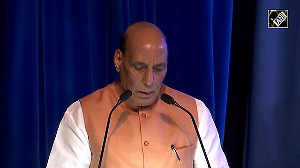It's the futurist's first rule: You can't understand the future without demographics. The composition of a society--whether its citizens are old or young, prosperous or declining, rural or urban--shapes every aspect of civic life, from politics, economics, and culture to the kinds of products, services, and businesses that are likely to succeed or fail.
Demographics isn't destiny, but it's close. Our leaders, as a rule, completely miss the boat on demographics and how it informs their own organizations, customers, and constituencies. And it's not hard to see why: Most executives aren't trained to make sense of demographic forecasts (there are no courses on demographics at Harvard Business School or Wharton, for example), and the field itself does little to raise its own profile.
Demographers frequently come across like accountants--without all that sex appeal.
But that doesn't mean exciting and important things aren't happening. The United States of 2016 will find itself in the throes of demographic shifts that will upend our political, economic, and technological priorities and redefine our markets. From our age distribution to the color of our skin, we will look dramatically different.
To get a sense of what lies ahead, consider a simple demographic tool: the "population pyramid." Imagine that we took all of the people in a given population and stacked them up by age, putting all the infants at the bottom and all the centenarians up top. For most stable, peacetime societies, the resulting figure would look like a pyramid, with the youngest people at the base and the oldest people up at the tip. And indeed, that is exactly what you see today in a place like India--a perfectly sloped pyramid with lots and lots of babies at the bottom and a handful of the ancient. By contrast, in what passes for a demographic joke (given our fondness for Fritos and Cinnabon), the current U.S. pyramid looks like an overweight contestant on The Biggest Loser, with the giant baby boom billowing out from its midsection.
Starting in the next decade, however, our flabby pyramid is quickly going to slim down. It will assume the form of an hourglass, with the largest number of older people in our society's history, the quasi-retired baby boomers, up top, and the largest generation of young people since the boomers--the millennials, or echo boomers--at the bottom. The beleaguered generation-Xers will form the "pinched waist" in the middle.
The hourglass society will bring an avalanche of new social challenges, cultural norms, and business opportunities. With a huge increase in the number of older consumers, entirely new entertainment, culture, and news markets will open up--film, television, books, and Internet sites pitched more to the Matlock set than to the Eminem crowd.
Also, older people tend to vote more frequently, and they will wield significant political clout: We could see a multidecade "boomerocracy" or, as one gen-Xer put it archly over cocktails, "TRBN: terminal rule by boomer narcissists."
(G)old Rush
The demographic concentration of boomers at the top of the population pyramid, backed by their vast reservoirs of disposable income, represents the next American gold rush. Ten years from now, the cover of this magazine will be graced with the smiling faces of the entrepreneurs and corporate leaders who unlocked the elder boomers' hearts and minds--and drained their bank accounts.
It's hard to overstate the weight of the numbers: Boomers now represent a U.S. market of some 36 million, or about 12% of the population, and as they move up the pyramid, the number of seniors is going to rise dramatically. By 2011, the 65-and-over population will be growing faster than the population as a whole in each of the 50 states. The Boomer Binge will have begun.
Businesses aren't confused about the opportunity that growth represents: Consumer electronics firms such as Vodafone are investing in mobile phones with designs tweaked to the requirements of older customers; IBM has developed a computer mouse that compensates for the tremors that sometimes affect seniors' hands; and Gap Inc. recently unveiled Forth & Towne, a new clothing line for women who fall into the vast retail void between the navel-pierced teen and the librarian in a twin set.
And those examples are just a foretaste. The real breakthroughs are going to come from companies helping boomers to hold on to their youth--and milk it for all it's worth. Boomers have never met a life stage they didn't want to remake in their own image, and their golden years will be no exception. Watch grandma windsurf! Pole vault! Pole dance! As their last act, boomers will remake even the American way of death: Consider Eternal Reefs (www.eternalreefs.com), a cremation burial option where your ashes can be mixed with concrete and turned into an artificial reef off the coast of Florida. Boomers will be scuba diving even in the afterlife.
The hourglass phenomenon will shape not only where you work but whom you work with--and how you get along with them. Some boomers, upon turning 65, will disappear in a puff of RV smoke, retiring to a never-ending suck-the-marrow-from-life experiential party that ends only at death. Others will find themselves fully and happily employed by companies desperate to keep them. Still others, due to lamentably low savings rates and the erosion of social services, will enter a purgatorial nether-retirement and serve as an object lesson for their children.
This great boomer tri-furcation will in turn create a paradox for the gen-Xers coming up behind them. Some Xers will find themselves in the midst of an enormous job boom created by the vacating boomers, who will leave open far more jobs than there are qualified Xers to fill them. (And there will be much rejoicing.) At the same time, some Xers will find themselves trapped behind a new glass ceiling--the boomer "ass ceiling" if you will--blocked from their next career step because an all-too-healthy or all-too-indebted precursor just can't or won't retire.
Making all of this intergenerational jockeying even more complex, the millennials will soon begin showing up in the workforce en masse, carting along a heady mix of ravenous careerism, natural social networking and IT skills, a thirst for learning, and a rather presumptuous expectation of direct contact with senior management. How this perky generation, which is more like the boomers than any generation in between, will get along with the perennially annoyed Xers will be the fodder for beloved sitcoms in 2013.
Color Shift
Even as America goes gray (and promptly dyes its hair), its skin will become more polychrome. Buoyed by higher birth rates among minorities and increasing immigration from Latin America and Asia, parts of the United States will become as diverse as a New York subway car. Minorities will make up one-third of the U.S. population in 2016; in the decades to come, Hispanics, now one of every seven Americans, will be one in four. As Hispanic influence grows, it will be transformed from the undifferentiated "niche market" many Americans consider it to be today into a mass market in its own right, segmented by nationality, cultural experience, and other characteristics.
The cultural influx won't only be Hispanic, though. High schools will soon routinely offer Hindi and Mandarin as Asians become a still more influential slice of the populace. MTV is already launching new channels, MTV Desi, MTV Chi, and MTV K aimed at South Asian, Chinese, and Korean immigrant teens. We can expect a proliferation of culture not only pitched to Asians, but by them.
The rise of these new blocs will change American diets, tastes, and cultural references--but it will also redefine the notion of race itself, perhaps permanently. The distinction between black and white will become an anachronism: Get ready for the politics of brown.
But this burst of diversity and immigration will affect regions of the country differently. Almost one-half (46%) of U.S. population growth in the next decade will come from three states: California, Texas, and Florida, which by 2016 will have overtaken New York as the third-largest in the country. The giant sucking sound you'll hear will be the national center of gravity shifting south and west. By 2016, where you compete may matter much more than how.
It won't be just the age and color of the workforce that change in the years ahead--its gender will change, too. Though it has been widely underreported, women make up approximately 58% of the undergraduate college population, and that figure is rising.
Within 10 years, at least 3 million more women than men could be attending college, and because educational and economic achievement are so strongly correlated, those gains will inevitably translate into cultural influence, purchasing power, and corporate leadership. That trend will only accelerate through the 2010s.
Women's economic achievement is already seeding the clouds for a deluge of distaff marketing and product development. According to the National Association of Realtors, the percentage of single female home buyers in the past 20 years has nearly doubled, placing them second only to married couples. And the number of women buying high-end consumer electronics like plasma televisions is growing faster than the number of men (a reality yet to sink in at the big-box stores).
Finally, while the workplace undergoes tremendous change, so will the American family. Thanks to boomer retirees who've outlived their income--or failed to save any of it--many families are going to get bigger.
Consider Florida: While most of us think of it as a geriatric haven, in recent decades the number of seniors exiting the state has steadily increased, in many cases because they can no longer afford to stay. (To deal with this, MetLife started offering longevity insurance in 2004, a fixed deferred-income annuity to help insure seniors against "the biggest risk they will face in retirement: longevity risk." )
Where will boomers go when they run out of money? In many cases, the answer will be, home to live with their kids. In fact, according to some projections, a woman born after 1980 is likely to take care of her mother longer than she cares for her own children. (Perhaps MetLife will get around to "mother-in-law" insurance.) As those boomers move back in, they'll redefine the family from a two-generation "nuclear" family to a three- or even four-generation affair, a return to the beginning of the 20th century.
These new multigenerational families will be a fertile new market for everything from new senior-plus-family transportation (call it "the Clan-agon") to travel, entertainment, cooking, and shopping. Health-care and financial-services companies will find themselves speaking not only to their senior customers but to their family members, who form an extended-care network.
Oh, and it's not just your parents who may be living with you. Your kids may be there, too. Millennials fully expect to live forever, which gives them plenty of time to drag out each stage of life, starting with a nice prolonged "twixter" adolescence. For some, this will last well into their thirties.
You won't have to worry about a babysitter, though: Grandma plays a mean game of Grand Theft Auto.
Futurist Andrew Zolli is the founder of Z + Partners, a strategy consulting firm, and curator of the annual PopTech conference. He was a member of the Fast 50 class of 2005.
Do you want to discuss stock tips? Do you know a hot one? Join the Stock Market Discussion Group.







 © 2025
© 2025